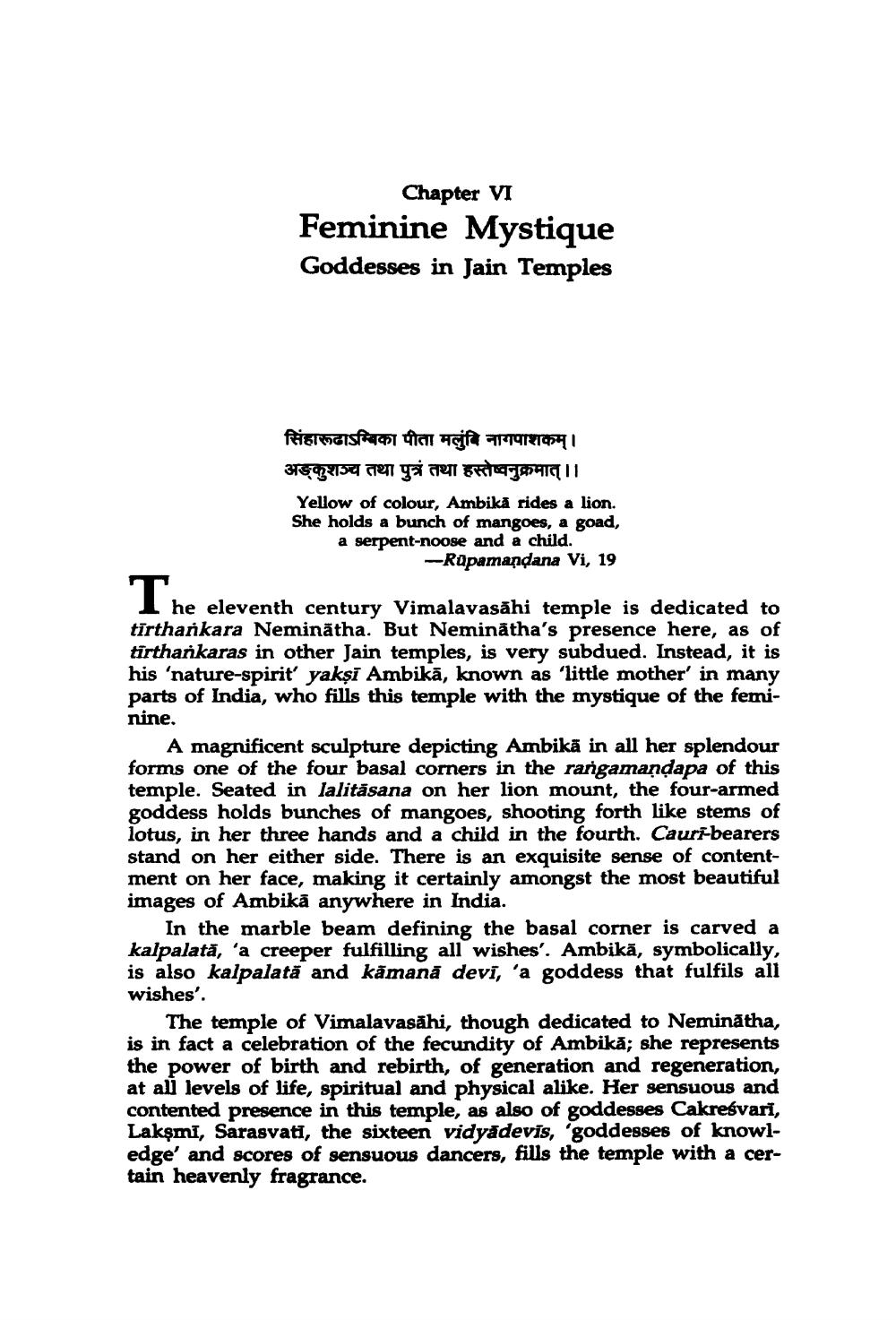________________
Chapter VI Feminine Mystique Goddesses in Jain Temples
सिंहारूढाऽम्बिका पीता मलुंबिनागपाशकम्। अकुशञ्च तथा पुत्रं तथा हस्तेष्वनुक्रमात्।।
Yellow of colour, Ambika rides a lion. She holds a bunch of mangoes, a goad, a serpent-noose and a child.
-ROpamandana Vi, 19
1 he eleventh century Vimalavasāhi temple is dedicated to tīrtharkara Neminātha. But Neminātha's presence here, as of tirtharikaras in other Jain temples, is very subdued. Instead, it is his 'nature-spirit' yakşi Ambikā, known as 'little mother' in many parts of India, who fills this temple with the mystique of the feminine.
A magnificent sculpture depicting Ambikā in all her splendour forms one of the four basal corners in the rangamandapa of this temple. Seated in lalitäsana on her lion mount, the four-armed goddess holds bunches of mangoes, shooting forth like stems of lotus, in her three hands and a child in the fourth. Cauri-bearers stand on her either side. There is an exquisite sense of contentment on her face, making it certainly amongst the most beautiful images of Ambikā anywhere in India.
In the marble beam defining the basal corner is carved a kalpalată, 'a creeper fulfilling all wishes'. Ambikā, symbolically, is also kalpalată and kāmanā devi, 'a goddess that fulfils all wishes'.
The temple of Vimalayasāhi, though dedicated to Neminátha, is in fact a celebration of the fecundity of Ambika; she represents the power of birth and rebirth, of generation and regeneration, at all levels of life, spiritual and physical alike. Her sensuous and contented presence in this temple, as also of goddesses Cakreśvari, Lakşmi, Sarasvati, the sixteen vidyādevis, 'goddesses of knowledge' and scores of sensuous dancers, fills the temple with a certain heavenly fragrance.




